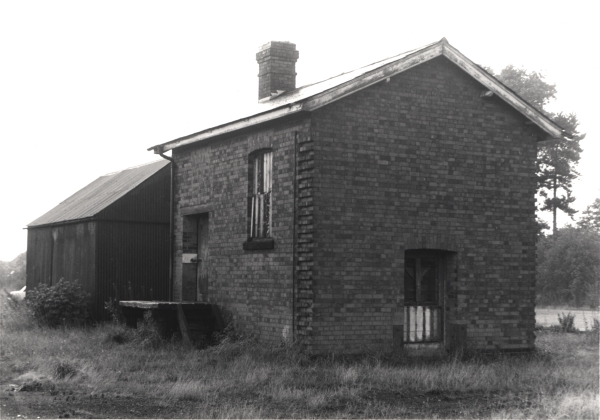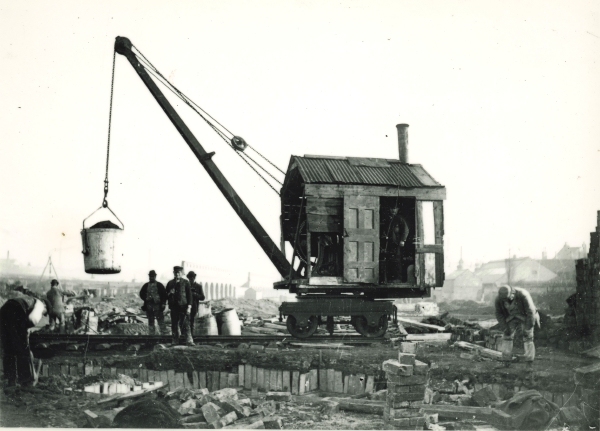Commercial activities were an important part of station life. A firm of Builders' Merchants, Joseph Ellis & Son had a depot in the station yard, also 2 or 3 Coal Merchants, with deliveries of cow-cake and fertilisers for local farmers. There was a steady flow of food and drink from Fortnum & Mason for Beaumanor Hall. Outgoing traffic from the area included cattle and sheep, also sugar beet. There was a weighbridge at the yard exit. This has long gone, although the weighbridge hut is still there.
Photographed looking north east in June 1975, this is the disused goods shed at Quorn & Woodhouse. In common with many other stations on the Last Main Line, provision was made here for an extensive goods yard. See Details
The Beaumanor Estate decided to sell timber, and it soon blocked the yard. A railway crane had to be brought in together with extra men and flat wagons. Timber was sold by weight, and it is not easy to weigh a tree. This had to be estimated by measurement of length and girth, and the type of tree - a specialist job.
A steam crane at work. The crane's cab is not an original feature, but an improvised shelter of wood and corrugated metal. See Details
In 1920, H. Barkus started a daily service in a Ford bus. It could carry 6 passengers between Woodhouse Eaves and the G.C.R. station. Besides passenger traffic, Mr. Barkus had a contract to collect from and deliver goods to the station. The G.C.R. had Parcel Receiving offices in most provincial towns, including Mr. F. Squires of Woodhouse Eaves. Also, conveyances can be obtained on short notice being given to Mrs. E. Squires to convey passengers from the station to Quorn or Woodhouse Eaves.

A typical petrol driven bus of the 1920s, made by Brush of Loughborough in 1921 (Record Office for Leicestershire, Leicester & Rutland: 13D71 photo no. 3140)









